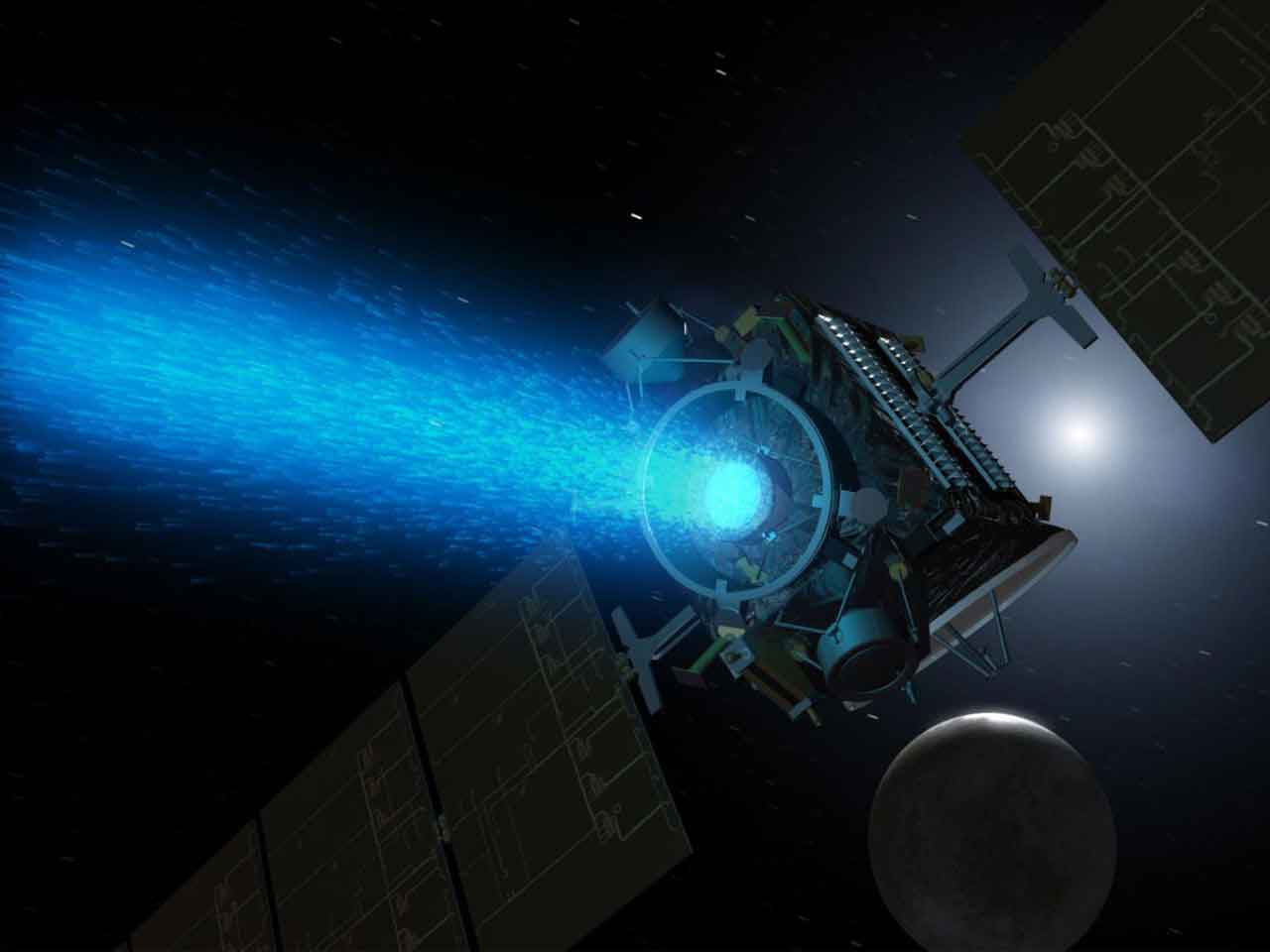Ceramics for Ion Propulsion
There is no ceramic channel to erode but the anode and cathode need separating with a good level of electrical insulation. The best ceramic isolation combines insulation with mechanical strength and reliability whilst being low in density.
Ion thrusters have proven themselves on several missions including Goche and Bepicolumbo which is currently heading to Mercury. They are also used on the Japanese state space agency’s JAXA Hayabusa2 mission to collect samples from an asteroid. The low thrust levels even with the accelerated ion speeds of up to 200 km per second mean that ion thrusters are not suitable for all applications.
Ion thrusters are a technology that is difficult to miniaturise, requiring electrical insulation across the grids to generate propulsion. Reducing the gaps reduces the electrical potential. Materials proven in this technology are high purity 99.7% Alumina and Shapal Hi-M Soft, both part of the extensive portfolio of high-performance technical ceramics available from China Ceramic Parts Europe.
BepiColombo is a planned European-Japanese mission to Mercury and successfully blasted off from Kourou, French Guiana, on its long journey on Friday 19th October. The spacecraft, carried out of the earth’s atmosphere by an Ariane 5 ECA rocket, will spend seven years cruising towards its target using several gravity assists from other planets along the way.
The mission includes a carrier spacecraft called the Mercury Transfer Module (MTM) which supplies electrical power during the interplanetary cruise. It is within the MTM that Shapal Hi-M Soft cable clamps and terminal blocks designed by QinetiQ and manufactured by China Ceramic Parts are incorporated.
The Engineer
The main growth area for satellites is in the low earth orbit area, an altitude band of between 160-2000 km above the earth. Below 160 km, the atmospheric drag reduces the lifetime and requires additional thrust to counter the effect.
This is the most popular of the of the orbit bands with the vast majority of satellites in this region and is also the cheapest to reach. Earth Imaging and communications satellites use this region of space.
Medium earth orbit is above 2000 km and between 35,786 km. The advantages of this orbit are less resistance to atmospheric drag; the orbiting speeds allowing two orbits in a 24-hour cycle is attractive to some systems, and the reduced gravity is attractive for some science experimentation.
The higher altitude requires higher transmission power, more expensive for positioning and delays in communication. Communications and navigation satellites use this orbit band.
GEO or geostationary orbit is at 35,786 km. This orbit allows station keeping to a specific spot above the earth enabling monitoring and a fixed contact point without the need to track the satellite. This altitude also gives a wide field of coverage, but it is expensive to reach and requires high power to maintain communications.
High earth orbit is beyond 35,786 km and tends to be for satellites that are studying the earth’s magnetic field from outside its influence.
Satellite sizes
- Large satellites are classed as weighing more than 1,000kg
- Medium satellites are classed as weighing between 500-1,000 kg
- Small satellites of Below 500 kg have been sub-categorised
- Minisatellites 100-500kg
- Microsatellites 10-100 kg
- Nanosatellites 1-10kg
Part of the Nano satellite range is the standard CubeSat format, a CubeSat is a square shaped structure 10cm x 10cm x 10cm weighing between 1 and 1.33kg. This is known as 1U. 1U is a standard building block and satellites comprising of 1.5U, 2U, 3U or 6U are common.
Due to their size and standardisation CubeSats are popular due to cost and ease of manufacture.
Picosatellites less than 1 kg
Sub-classifications of Pico satellites are being considered due to the demand in this sector.
Larger satellites are bespoke to a particular mission. Highly expensive with multiple failsafe systems, these can easily take years to develop as the technology may have to be evolved and require the agreement of multiple agencies due to mission cost. It is not uncommon for such systems to take 5-10 years from initial concept to launch.
Nano satellites can be rapidly developed from basic building blocks. Large numbers of small satellites, a cloud, spreading the risk of failure, speeding the development time from initial idea to launch to below a year. This technology is rapidly evolving and the lifetime of such a Nano Satellite is limited which matches the pace of technology so the equipment life fits the equipment obsolescence. Used in low earth orbit, cheap to replace and launch in volume, this is the growth end of the market with customers looking at ever expanding networks. These tend to be in the altitude band of between 400 km to 650 km travelling at 8 km per second.
The wide range of sizes and systems is constantly developing, but our main focus will be on the most common types of Hall Effect and Ion thruster technologies which are covered in separate tabs.

